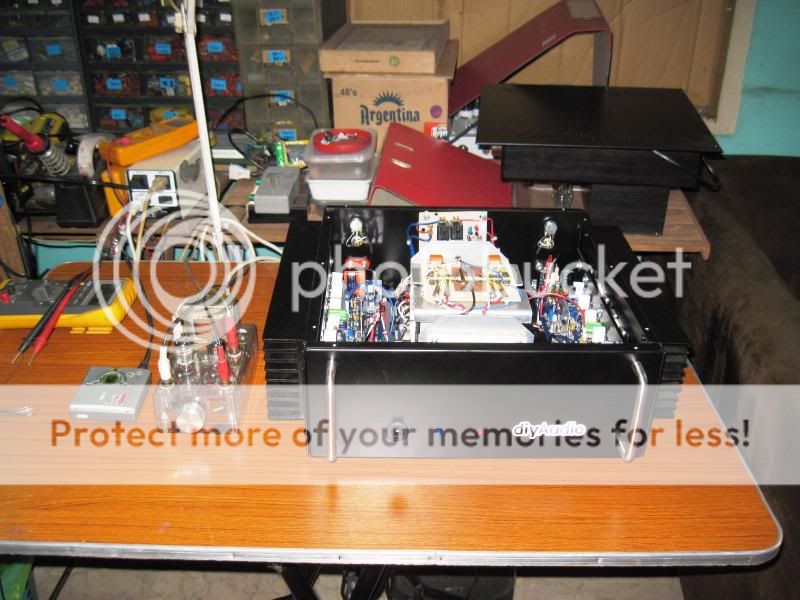Apparently I'm not the only person "imagining it."
Probably not. Bigger question is what is "IT" and if "IT" is desireable if you aim for unclored sound reproduction.
Member
Joined 2009
Paid Member
A plate follower is not a regular stage with plate and cathode resistors, with the cathode resistor unbypassed. That is a common (or grounded) cathode stage with cathode degeneration, and has higher output impedance than a 'regular' stage. Unless feeding a very high impedance or a very linear impedance it could sound different from a cathode follower.ashok said:In one power amp the cathode follower appeared to sound more 'powerful' than a plate follower ( regular stage with some gain and with plate and cathode resistor load and no cathode bypass cap ).
A plate follower is like 'regular stage' but with feedback from plate to grid via a resistor (and, usually, DC blocking capacitor). It is what the so-called 'Schade' connection is. It has lower output impedance than a 'regular' stage. Some people restrict the name 'plate follower' to such a stage with unity gain, but I think that is too strict. Apart from the phase inversion it would sound the same as a competent cathode follower.
and is it even possible to comment on the sound with/without the pre-amp or is perhaps the pre-amp needed to get anything working ?
sure, with or without the preamp, sound was loud enough on my AIWA bookshelf speakers(under the table),
no hum, no noise, no hiss, very listenable....
the tube preamp added some niceties, as if a tone control was added.....
Sometimes you gotta use buffers.
Exactly. I worked in both the r.f. and audio fields, and mostly in r.f. the academic term 'matching' is relevant, because power transfer is literally the requirement. In audio amplifers the accent is mostly on voltage amplification (except for the final stage), and often under lowest noise conditions.
Apparently I'm not the only person "imagining it."
No you are not.
Yes, some specs of op-amps are superior, but those are not the most required ones for audio (depending). In pre-amps, depending on the design, for one thing head-room is demanded. If one is to dwell with that in the order of 26dB or more, the usual maximum voltages for op-amps are inadequate (I am not fimiliar with special high voltage types etc.). My own pre-amps/phono-stages often use 60V of d.c. or more, for which I prefer discreet low noise transistors.
This can be a debateble point regarding mass construction and such, with which I cannot argue. For myself, I simply get to my expected requirements the other way. This is regarding semiconductors, of course. With tubes the picture is different - still, work out the available headroom with tubes ....
For those who have time , please try to check the difference in sound between a simple cathode follower stage and standard tube stage with gain , at the input of the power amp. Never mind all the theoretical explanations . Just try it, it shouldn't take long. Do a fairly extended listening test before coming to any conclusion. Of course only for those who like tubes and ss I guess !
If you like what you hear, it's good, if you don't then move on to other things ! Nothing else matters......it IS audio !
Cheers.
If you like what you hear, it's good, if you don't then move on to other things ! Nothing else matters......it IS audio !
Cheers.
......if i have to work hard to listen for differences....
On this forum a very large number of people seem to be doing exactly this ! However they are enjoying what they are doing !
- Status
- This old topic is closed. If you want to reopen this topic, contact a moderator using the "Report Post" button.
- Home
- Amplifiers
- Tubes / Valves
- Benefit/SQ of tube stage at the input of ss power amp
